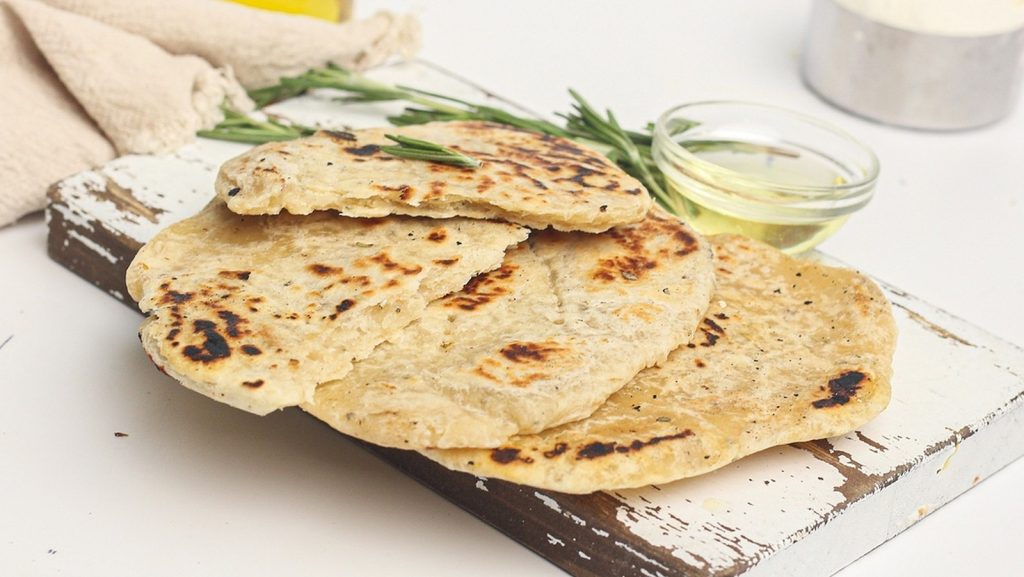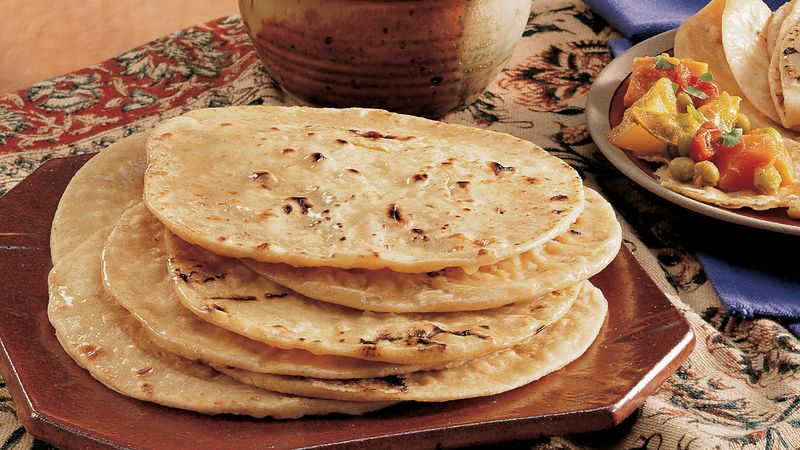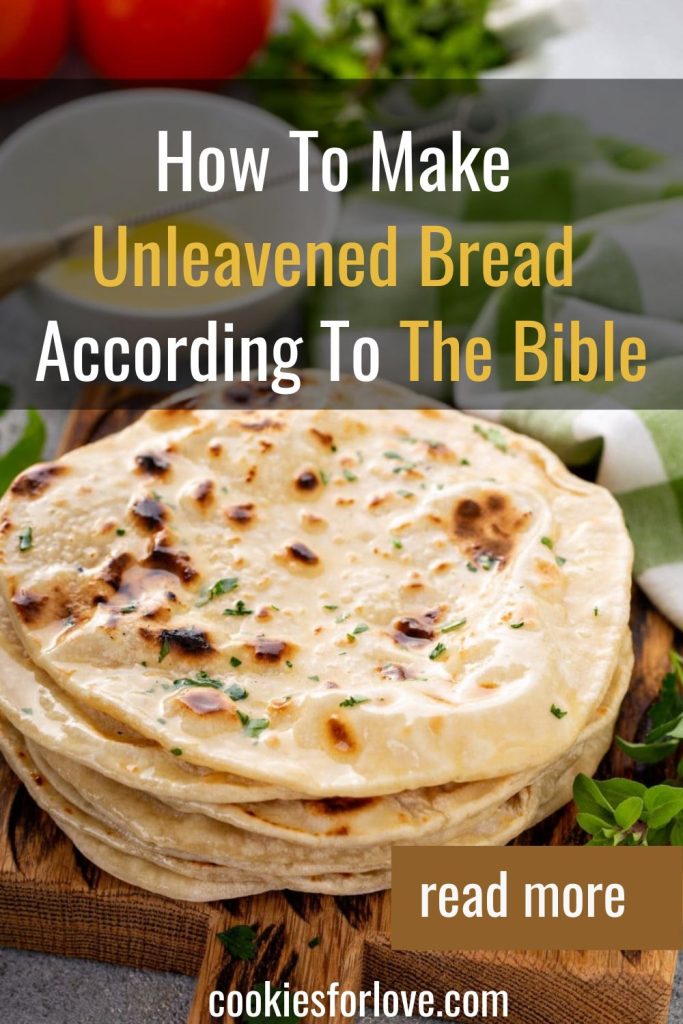Making unleavened bread, also known as matzo or matzah, is an ancient tradition that has been around for thousands of years. In the Bible, it is mentioned in both the Old and New Testaments. It is made without yeast, so it’s a quick bread—which means you don’t need to wait for it to rise. Here’s how to make unleavened bread according to the Bible.

Table of Contents
Gather the Ingredients
The ingredients for unleavened bread are simple and easy to find: all-purpose flour, olive oil, salt, and water. Depending on your preference, you can also add seasonings like garlic or herbs. Once you have all your ingredients together, preheat your oven to 375°F (190°C).
Mix the Dough
In a large bowl or stand mixer, mix together 3 cups (360 g) of all-purpose flour with 1 cup (240 ml) of warm water and 2 tablespoons (30 ml) of olive oil until everything comes together into a dough.
If you are using fresh herbs or garlic powder as seasonings, add them now and mix until they are evenly distributed throughout the dough. Once everything is combined into a ball shape, knead the dough on a lightly floured surface for about 5 minutes until it is smooth and elastic.
Shape & Bake
Divide the dough into 8 pieces and roll each piece out into a flat round shape about 1/8 inch (3 mm) thick. Place each round on an ungreased baking sheet and sprinkle with sea salt or other seasonings if desired. Bake in preheated oven for 20 minutes until golden brown and crispy on top.
Read more:
Toaster vs Toaster Oven: Which One Is Right for You?
Is There A Microwave Toaster Oven Combo? Pros and Cons
FAQs
Is unleavened bread gluten-free?
The answer to this question is not as simple as a yes or no. While some varieties of unleavened bread are gluten-free, others may contain traces of gluten. It all depends on the ingredients used in its production and how it’s cooked.
For example, if wheat flour is added during preparation, then the final product will likely contain gluten. Other gluten-free ingredients that can be used in making unleavened bread include almond flour, quinoa flour, amaranth flour, and buckwheat flour.
To ensure the bread is 100% gluten-free, it’s best to choose a variety made of these flours or purchase pre-made products labeled as “gluten-free”.
It’s also important to keep in mind that the baking process can affect the gluten content of unleavened bread, so if you purchase it from a bakery or store, make sure to read all labels carefully.
Read more: Is Baking Bread Endothermic Or Exothermic?
Do flour tortillas have leaven?
No, flour tortillas do not have leaven.
Leaven is a substance used to produce carbon dioxide gas in dough, resulting in the formation of bubbles and giving bread a light and airy texture. Flour tortillas are made from a simple mixture of flour, water, vegetable oil, and salt–no leaven is needed for them to achieve their desired soft and pliable texture.
To make flour tortillas, the dry ingredients are combined, followed by the addition of water to create a dough. This dough is then rolled out into thin circles and cooked on a hot griddle until they develop a golden-brown color and become lightly crisp around the edges. The result is a delicious, soft, and pliable flour tortilla perfect for making tacos or burritos.
Ultimately, while leaven is important in baking breads and other products, it is not needed to make flour tortillas.
What is leavened dough?
Leavened dough refers to any kind of dough that has had a leavening agent added to it before baking. Leavening agents are substances that produce carbon dioxide bubbles, which cause the dough to rise and give it a light, airy texture.
Commonly used leaveners include yeast, baking soda, and baking powder. Leavening agents work by releasing gases that expand the dough and make it lighter. This is why leavened doughs are much lighter, fluffier, and more palatable than unleavened doughs.
Leavening agents can be used in combination with one another to create different textures or flavors in doughs. For example, a mixture of yeast and baking powder can give dough a longer rise time, while using just baking soda will result in a shorter rise time. The type of leavening agent used depends on the desired outcome of the recipe.
Despite the different results that can be achieved by combining different leavening agents, each one produces carbon dioxide bubbles which expand the dough and make it lighter. Thus, leavened doughs are the key to achieving light, fluffy breads and pastries.
Leavened dough can be used in a variety of recipes, from sweet baked goods like cakes and muffins to savory dishes such as pizza or focaccia bread.
While some recipes may call for specific types of leaveners, others may allow for flexibility in the type and amount used. For example, some bread recipes may call for a combination of yeast and baking powder while other recipes may require only baking soda or even no leavening agent at all. Experimentation and knowledge of how different leavening agents work can help bakers create unique and delicious treats.

Conclusion
Unleavened bread has been part of many cultures since ancient times; in fact, many people believe that this type of bread was eaten by Jesus during Passover in Jerusalem over 2,000 years ago! Making unleavened bread at home doesn’t take much time or effort but can be incredibly rewarding when done correctly—and it tastes wonderful! Now that you know how to make unleavened bread according to the bible—go ahead and give it a try! You won’t regret it!
References:
https://abcnews.go.com/alerts/food









